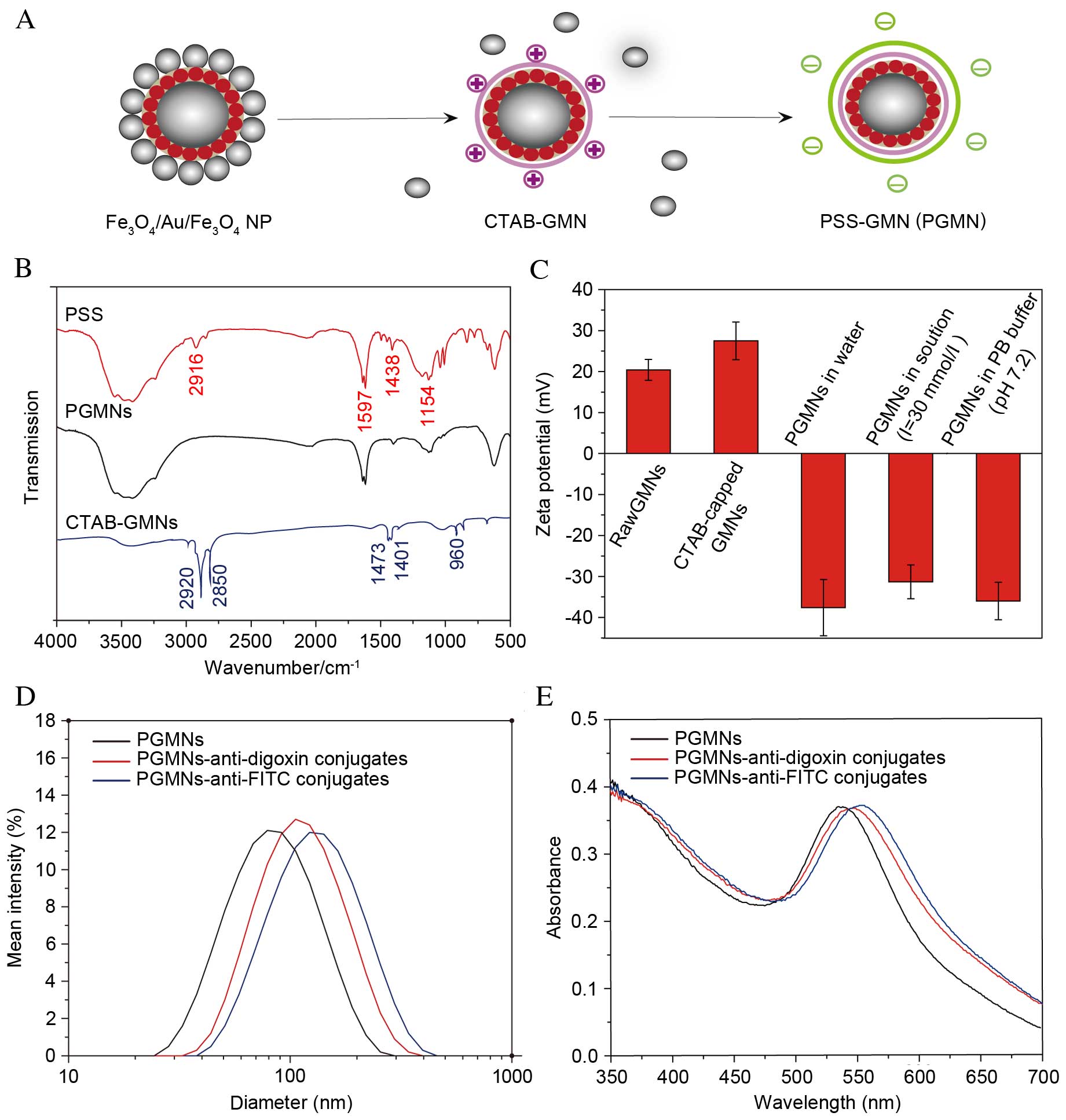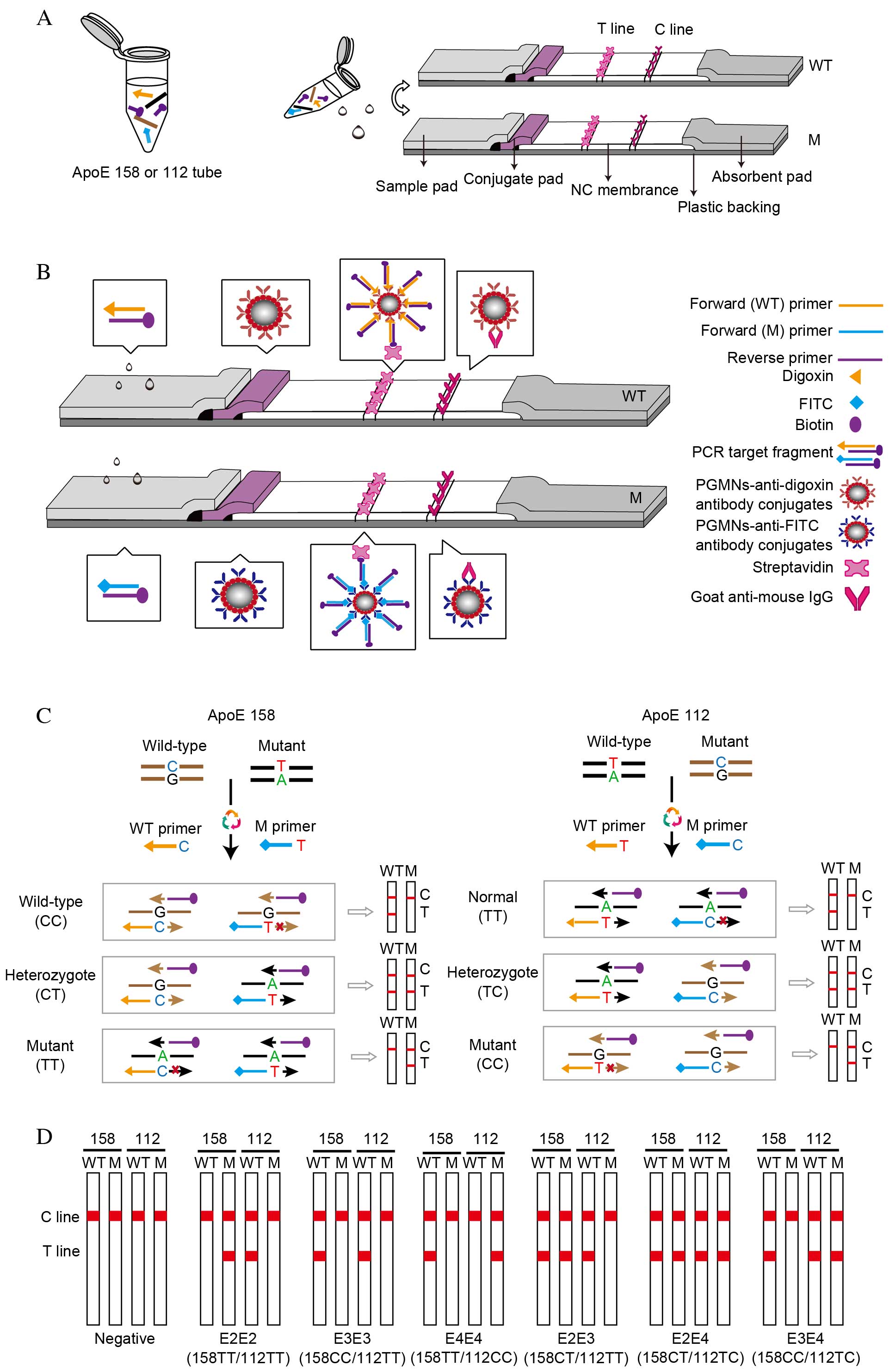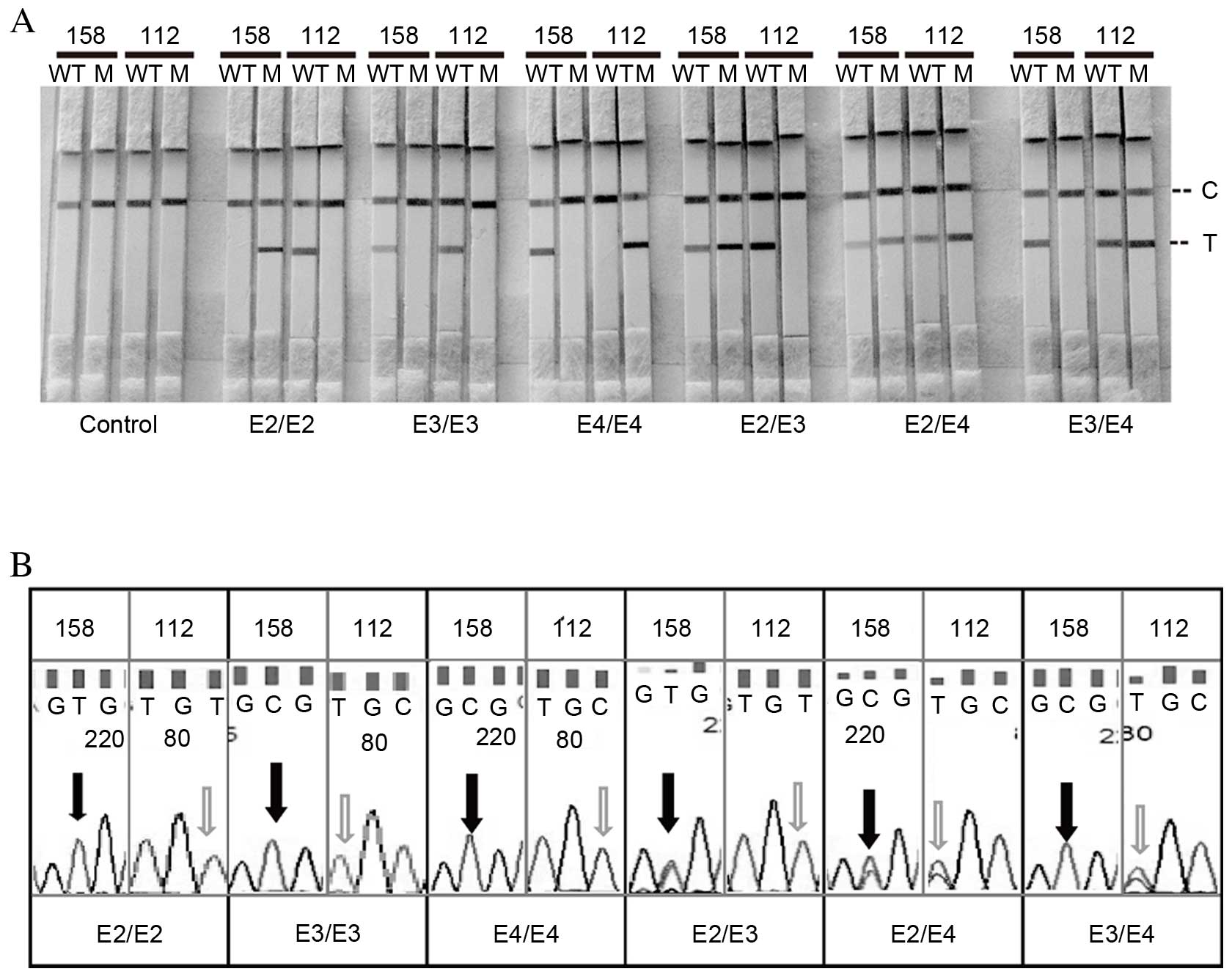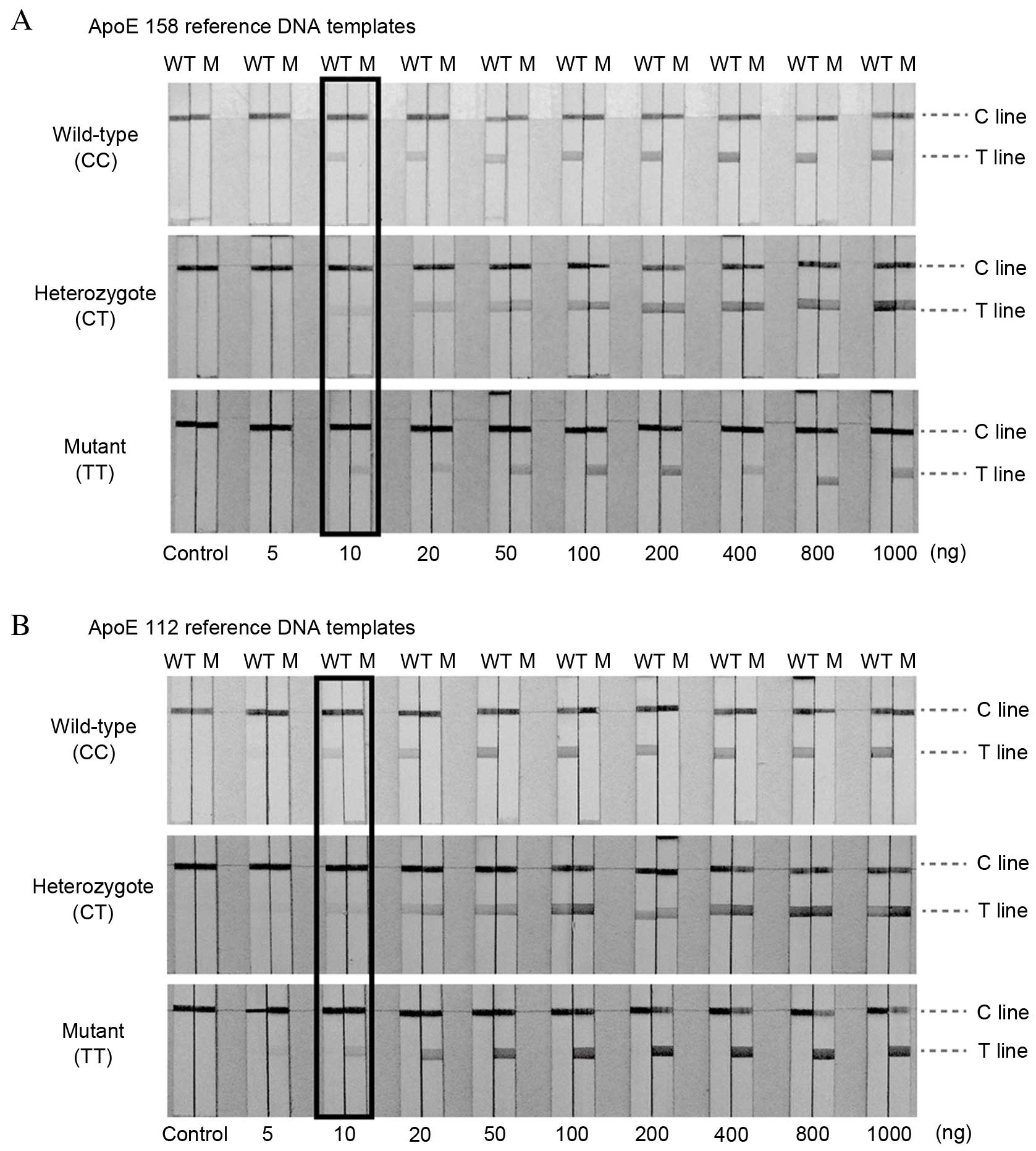|
1
|
Hirschhorn JN and Daly MJ: Genome-wide
association studies for common diseases and complex traits. Nat Rev
Genet. 6:95–108. 2005. View
Article : Google Scholar : PubMed/NCBI
|
|
2
|
Shabo A: Integrating genomics into
clinical practice: Standards and regulatory challenges. Curr Opin
Mol Ther. 10:267–272. 2008.PubMed/NCBI
|
|
3
|
Bertram L and Tanzi RE: Thirty years of
Alzheimer's disease genetics: The implications of systematic
meta-analyses. Nat Rev Neurosci. 9:768–778. 2008. View Article : Google Scholar : PubMed/NCBI
|
|
4
|
Liu CC, Kanekiyo T, Xu H and Bu G:
Apolipoprotein E and Alzheimer disease: Risk, mechanisms and
therapy. Nat Rev Neurol. 9:106–118. 2013. View Article : Google Scholar : PubMed/NCBI
|
|
5
|
Lahiri DK, Sambamurti K and Bennett DA:
Apolipoprotein gene and its interaction with the environmentally
driven risk factors: Molecular, genetic and epidemiological studies
of Alzheimer's disease. Neurobiol Aging. 25:651–660. 2004.
View Article : Google Scholar : PubMed/NCBI
|
|
6
|
Hackler R, Schäfer JR, Motzny S, Brand S,
Kleine TO, Kaffarnik H and Steinmetz A: Rapid determination of
apolipoprotein E phenotypes from whole plasma by automated
isoelectric focusing using PhastSystem and immunofixation. J Lipid
Res. 35:153–158. 1994.PubMed/NCBI
|
|
7
|
Nishimura M, Satoh M, Nishimura S,
Kakinuma S, Sato K, Sawai S, Tsuchida S, Kazama T, Matsushita K,
Kado S, et al: Human apolipoprotein e resequencing by proteomic
analysis and its application to serotyping. PloS One. 9:e853562014.
View Article : Google Scholar : PubMed/NCBI
|
|
8
|
Wu YY, Delgado R, Costello R, Sunderland
T, Dukoff R and Csako G: Quantitative assessment of apolipoprotein
E genotypes by image analysis of PCR-RFLP fragments. Clin Chim
Acta. 293:213–221. 2000. View Article : Google Scholar : PubMed/NCBI
|
|
9
|
Yi L, Wu T, Luo W, Zhou W and Wu J: A
non-invasive, rapid method to genotype late-onset Alzheimer's
disease-related apolipoprotein E gene polymorphisms. Neural Regen
Res. 9:69–75. 2014. View Article : Google Scholar : PubMed/NCBI
|
|
10
|
Ghebranious N, Ivacic L, Mallum J and
Dokken C: Detection of ApoE E2, E3 and E4 alleles using MALDI-TOF
mass spectrometry and the homogeneous mass-extend technology.
Nucleic Acids Res. 33:e1492005. View Article : Google Scholar : PubMed/NCBI
|
|
11
|
Donohoe GG, Salomäki A, Lehtimaki T,
Pulkki K and Kairisto V: Rapid identification of apolipoprotein E
genotypes by multiplex amplification refractory mutation system PCR
and capillary gel electrophoresis. Clinical Chem. 45:143–146.
1999.
|
|
12
|
Poli M, Gatta LB, Dominici R, Lovati C,
Mariani C, Albertini A and Finazzi D: Apolipoprotein E haplotyping
by denaturing high-performance liquid chromatography. Clin Chem Lab
Med. 43:512–518. 2005. View Article : Google Scholar : PubMed/NCBI
|
|
13
|
Koch W, Ehrenhaft A, Griesser K, Pfeufer
A, Müller J, Schömig A and Kastrati A: TaqMan systems for
genotyping of disease-related polymorphisms present in the gene
encoding apolipoprotein E. Clin Chem Lab Med. 40:1123–1131. 2002.
View Article : Google Scholar : PubMed/NCBI
|
|
14
|
Ben-Avi L, Durst R, Shpitzen S,
Leitersdorf E and Meiner V: Apolipoprotein E genotyping: Accurate,
simple, high throughput method using ABI Prism SNaPshot Multiplex
System. J Alzheimers Dis. 6:497–501. 2004.PubMed/NCBI
|
|
15
|
Lie P, Liu J, Fang Z, Dun B and Zeng L: A
lateral flow biosensor for detection of nucleic acids with high
sensitivity and selectivity. Chem Commun (Camb). 48:236–238. 2012.
View Article : Google Scholar : PubMed/NCBI
|
|
16
|
Wei Q, Xiang Z, He J, Wang G, Li H, Qian Z
and Yang M: Dumbbell-like Au-Fe3O4 nanoparticles as label for the
preparation of electrochemical immunosensors. Biosens Bioelectron.
26:627–631. 2010. View Article : Google Scholar : PubMed/NCBI
|
|
17
|
Zhang C, Shen G, Shen Y and Zhang X: The
development of an electrochemical immunosensor using a thiol
aromatic aldehyde and PAMAM-functionalized Fe3O4@Au nanoparticles.
Anal Biochem. 485:66–71. 2015. View Article : Google Scholar : PubMed/NCBI
|
|
18
|
Mehtala JG, Zemlyanov DY, Max JP, Kadasala
N, Zhao S and Wei A: Citrate-stabilized gold nanorods. Langmuir.
30:13727–13730. 2014. View Article : Google Scholar : PubMed/NCBI
|
|
19
|
Yang D, Ma JZ, Zhang QL, Li NN, Yang J,
Raju PA, Peng ML, Luo YL, Hui WL, Chen C and Cui Y:
Polyelectrolyte-coated gold magnetic nanoparticles for immunoassay
development: Toward point of care diagnostics for syphilis
screening. Anal Chem. 85:6688–6695. 2013. View Article : Google Scholar : PubMed/NCBI
|
|
20
|
Hui W, Zhang S, Zhang C, Wan Y, Zhu J,
Zhao G, Wu S, Xi D, Zhang Q, Li N and Cui Y: A novel lateral flow
assay based on GoldMag nanoparticles and its clinical applications
for genotyping of MTHFR C677T polymorphisms. Nanoscale.
8:3579–3587. 2016. View Article : Google Scholar : PubMed/NCBI
|
|
21
|
Hui W, Shi F, Yan K, Peng M, Cheng X, Luo
Y, Chen X, Roy V, Cui Y and Wang Z: Fe3O4/Au/Fe3O4 nanoflowers
exhibiting tunable saturation magnetization and enhanced
bioconjugation. Nanoscale. 4:747–751. 2012. View Article : Google Scholar : PubMed/NCBI
|
|
22
|
Shi F, Hui W, Chen C and Cui Y: Surface
modification and characterization of Fe3O4/Au
composite nanoparticles. NANO. 6:145–151. 2011. View Article : Google Scholar
|
|
23
|
Yang D, Ma J, Peng M, Zhang Q, Luo Y, Hui
W, Jin T and Cui Y: Building nanoSPR biosensor systems based on
gold magnetic composite nanoparticles. J Nanosci Nanotechnol.
13:5485–5492. 2013. View Article : Google Scholar : PubMed/NCBI
|
|
24
|
Little S: Amplification-refractory
mutation system (ARMS) analysis of point mutations. Curr Protoc Hum
Genet: Chapter 9:Unit 9.8. 2001.doi: 10.1002/0471142905.hg0908s07.
View Article : Google Scholar
|
|
25
|
Liu J, Huang S, Sun M, Liu S, Liu Y, Wang
W, Zhang X, Wang H and Hua W: An improved allele-specific PCR
primer design method for SNP marker analysis and its application.
Plant Methods. 8:342012. View Article : Google Scholar : PubMed/NCBI
|
|
26
|
Rostro-Kohanloo BC, Bickford LR, Payne CM,
Day ES, Anderson LJ, Zhong M, Lee S, Mayer KM, Zal T, Adam L and
Dinney CP: The stabilization and targeting of
surfactant-synthesized gold nanorods. Nanotechnology.
20:4340052009. View Article : Google Scholar : PubMed/NCBI
|
|
27
|
Lee HY, Rwei SP, Wang L and Chen PH:
Preparation and characterization of core-shell
polyaniline-polystyrene sulfonate@Fe3O4
nanoparticles. Materials Chemistry and Physics. 112:805–809. 2008.
View Article : Google Scholar
|
|
28
|
Zalakain I, Politakos N, Ramos JA,
Saralegi A, Etxeberria H, Mondragon I, Corcuera A and Eceiza A:
Chemical and morphological characterization of sulfonated
polystyrene brushes in different environments. Eur Polym J.
49:2120–2127. 2013. View Article : Google Scholar
|
|
29
|
Dorris A, Rucareanu S, Reven L, Barrett CJ
and Lennox RB: Preparation and characterization of
polyelectrolyte-coated gold nanoparticles. Langmuir. 24:2532–2538.
2008. View Article : Google Scholar : PubMed/NCBI
|
|
30
|
Billotey C, Wilhelm C, Devaud M, Bacri JC,
Bittoun J and Gazeau F: Cell internalization of anionic maghemite
nanoparticles: Quantitative effect on magnetic resonance imaging.
Magn Reson Med. 49:646–654. 2003. View Article : Google Scholar : PubMed/NCBI
|
|
31
|
Ahmadi A, Shirazi H, Pourbagher N and
Omidfar K: Synthesis and characterization of core-shell Au Fe oxide
nanocomposites and their application for detecting immunological
interaction. Monoclon Antib Immunodiagn Immunother. 33:74–79. 2014.
View Article : Google Scholar : PubMed/NCBI
|
|
32
|
McFarland AD, Haynes CL, Mirkin CA, Van
Duyne RP and Godwin HA: Color my nanoworld. J Chem Educ.
81:544A2004. View Article : Google Scholar
|
|
33
|
Kaur K and Forrest JA: Influence of
particle size on the binding activity of proteins adsorbed onto
gold nanoparticles. Langmuir. 28:2736–2744. 2012. View Article : Google Scholar : PubMed/NCBI
|
|
34
|
Hu P, Qin YH, Jing CX, Lu L, Hu B and Du
PF: Does the geographical gradient of ApoE4 allele exist in China?
A systemic comparison among multiple Chinese populations. Mol Biol
Rep. 38:489–494. 2011. View Article : Google Scholar : PubMed/NCBI
|
|
35
|
Corbo RM and Scacchi R: Apolipoprotein E
(APOE) allele distribution in the world. Is APOE*4 a ‘thrifty'
allele? Ann Hum Genet. 63:301–310. 1999. View Article : Google Scholar
|













